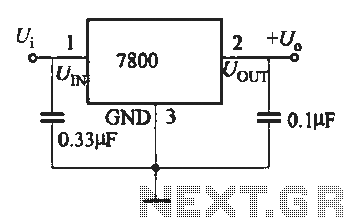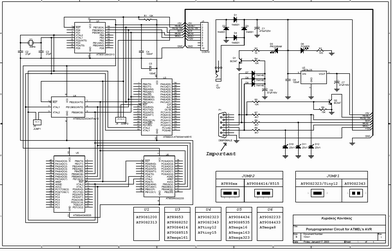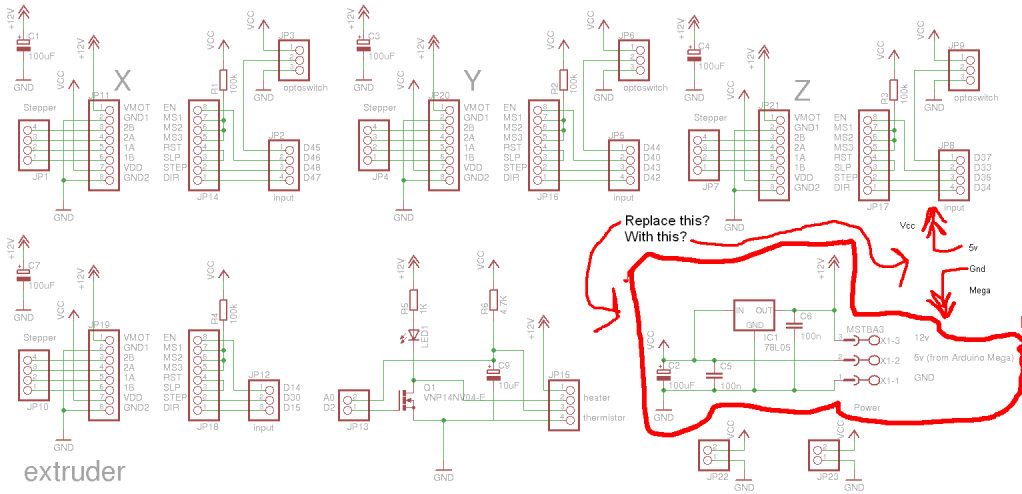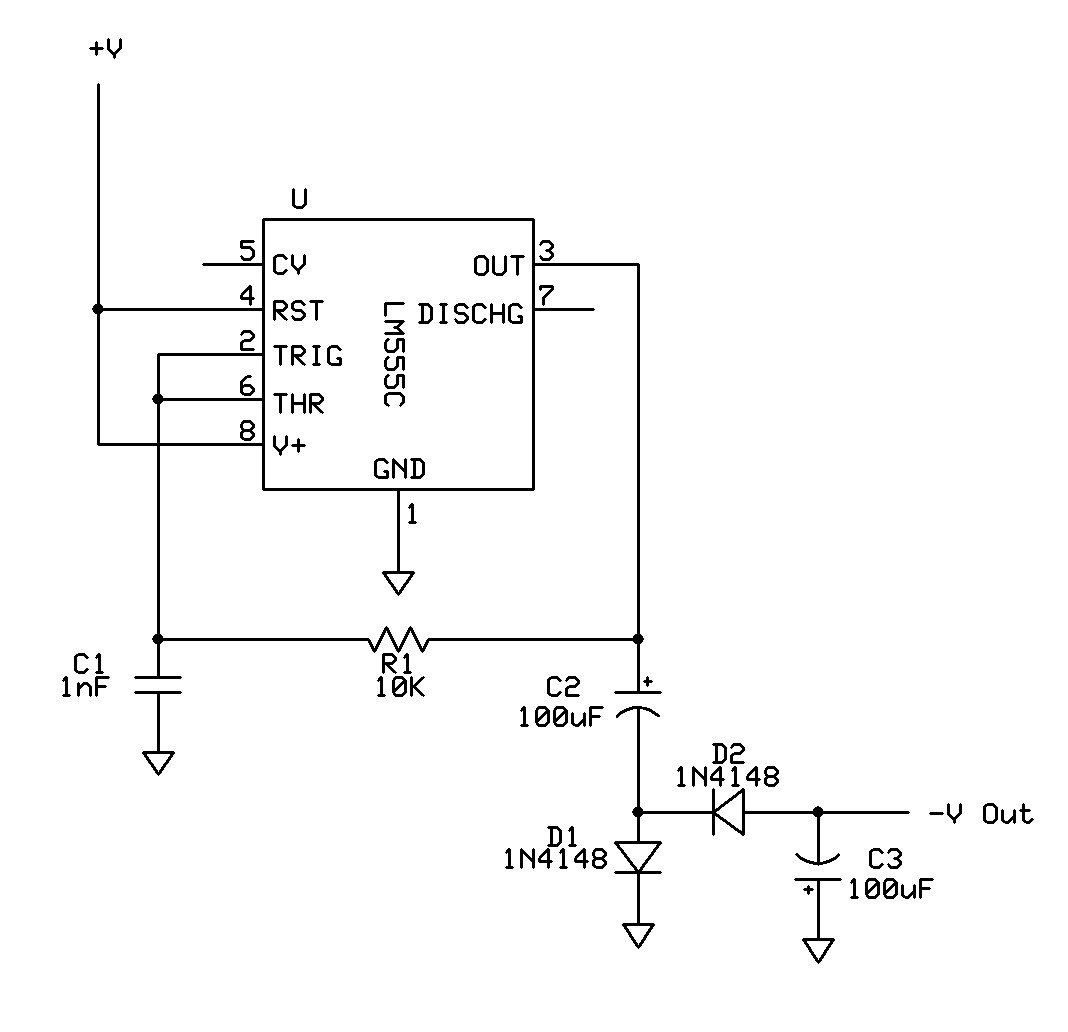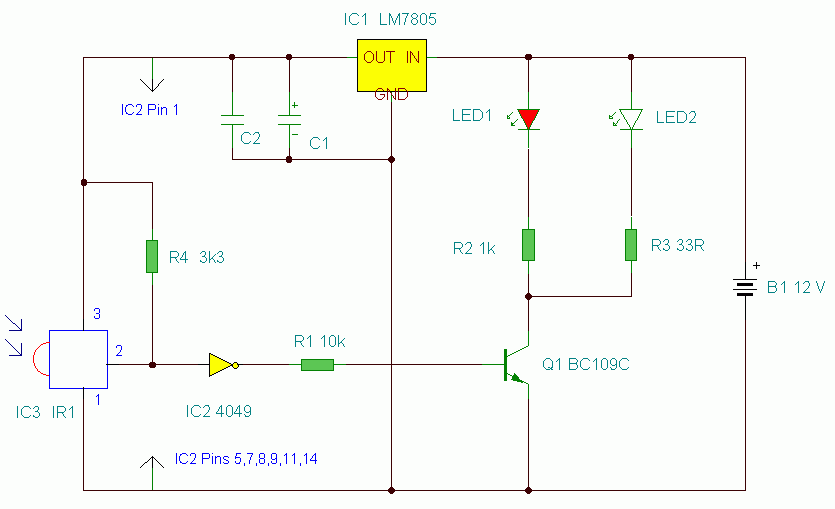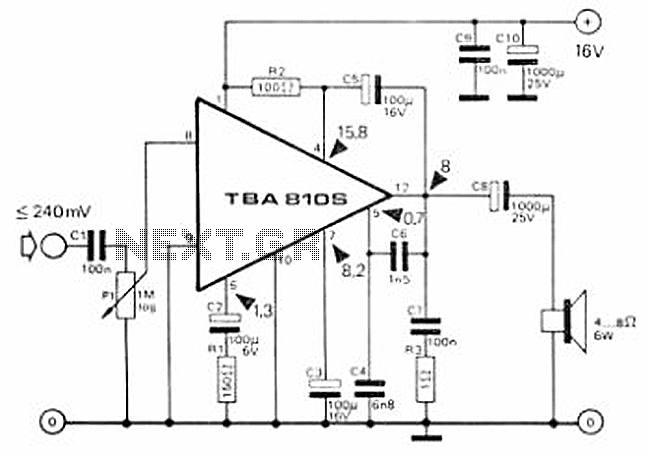
One Ic Capacitance Tester Circuit
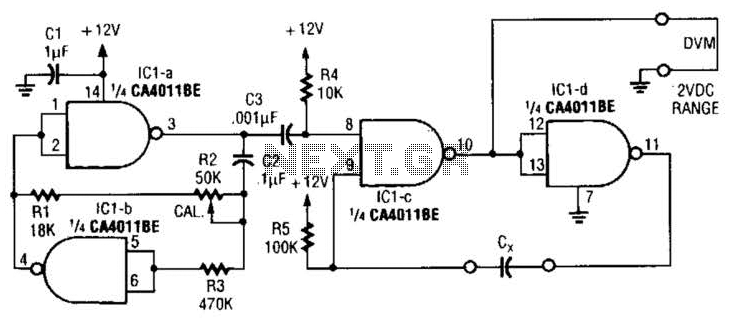
This circuit is designed for capacitor matching applications. The DC output voltage is directly related to the capacitance values of capacitor Cx. The specified circuit values are intended for capacitors in the 0.01 microfarad range; however, they can be adjusted for both lower and higher capacitance values.
The capacitor matching circuit operates by utilizing a voltage divider or a similar configuration to produce a DC output voltage that reflects the capacitance of Cx. The fundamental principle relies on the relationship between capacitance and voltage, where variations in capacitance will result in corresponding changes in the output voltage.
To implement this circuit, a suitable operational amplifier (op-amp) can be used to amplify the voltage across Cx, ensuring that the output voltage is within a measurable range. A resistor network may be incorporated to set the gain of the op-amp and to provide a reference voltage, which can be adjusted to calibrate the circuit for different capacitance values.
For capacitors below 0.01 microfarads, the values of the resistors and the feedback configuration of the op-amp may need to be modified to ensure accurate readings. Conversely, for capacitors above this range, the circuit can be adjusted by changing the resistor values or by incorporating additional stages of amplification to maintain linearity and precision in the output voltage.
In practical applications, this circuit can be utilized in testing environments where precise capacitance matching is critical, such as in filter design, tuning circuits, or in quality control processes in manufacturing electronic components. The versatility of the circuit allows it to accommodate a wide range of capacitor values, making it a valuable tool for electronics engineers and technicians. This circuit can be used to match capacitors, etc. The dc output voltage is related to the capacitance values of Cx. The circuit values shown are for capacitors in the 0.01- order of magnitude, but they can be changed for lower or higher values. 🔗 External reference
The capacitor matching circuit operates by utilizing a voltage divider or a similar configuration to produce a DC output voltage that reflects the capacitance of Cx. The fundamental principle relies on the relationship between capacitance and voltage, where variations in capacitance will result in corresponding changes in the output voltage.
To implement this circuit, a suitable operational amplifier (op-amp) can be used to amplify the voltage across Cx, ensuring that the output voltage is within a measurable range. A resistor network may be incorporated to set the gain of the op-amp and to provide a reference voltage, which can be adjusted to calibrate the circuit for different capacitance values.
For capacitors below 0.01 microfarads, the values of the resistors and the feedback configuration of the op-amp may need to be modified to ensure accurate readings. Conversely, for capacitors above this range, the circuit can be adjusted by changing the resistor values or by incorporating additional stages of amplification to maintain linearity and precision in the output voltage.
In practical applications, this circuit can be utilized in testing environments where precise capacitance matching is critical, such as in filter design, tuning circuits, or in quality control processes in manufacturing electronic components. The versatility of the circuit allows it to accommodate a wide range of capacitor values, making it a valuable tool for electronics engineers and technicians. This circuit can be used to match capacitors, etc. The dc output voltage is related to the capacitance values of Cx. The circuit values shown are for capacitors in the 0.01- order of magnitude, but they can be changed for lower or higher values. 🔗 External reference
Warning: include(partials/cookie-banner.php): Failed to open stream: Permission denied in /var/www/html/nextgr/view-circuit.php on line 713
Warning: include(): Failed opening 'partials/cookie-banner.php' for inclusion (include_path='.:/usr/share/php') in /var/www/html/nextgr/view-circuit.php on line 713
